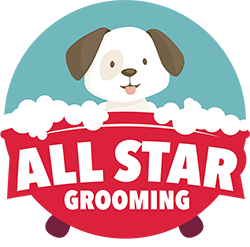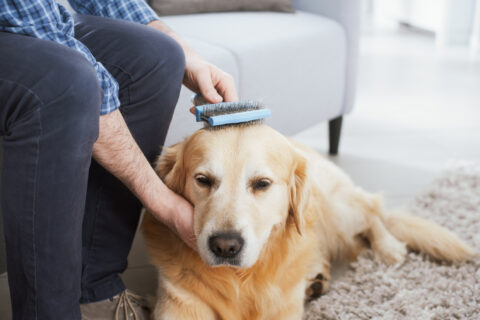Environmental Factors that Create Allergies in Dogs
Like humans, dogs can experience common allergies and symptoms from their surrounding environment. Known as atopy, dogs are predisposed to develop allergies to substances they have repeated exposure to – both in the home or outdoors. Environmental allergies typically act up when dogs inhale or touch the substance they are allergic to, therefore it is common to see signs of distress in your pup as there are many allergens they can be sensitive to.
It is important to recognize symptoms of allergies in your dog – especially during the summer season with increased outdoor exposure – to avoid further issues and to ensure your dog remains happy. Continue reading to learn what environmental factors provoke allergies, what familiar symptoms that occur and treatment options to reduce the severity.
Environmental Factors
Environmental factors such as pollen, molds, mildew, dust, dust mites, grasses and weeds all frequently provoke allergens in dogs. Most of these elements can be found in our own backyards or on daily walks, making it simple for your pup to be affected. Some dogs may develop one allergy, while others can be allergic to multiple elements – it depends on what they inherit with their genetic makeup.
Symptoms
Considering these environmental factors are more apparent during spring and summer, dog allergies typically are seasonal and symptoms should not influence them year-round. However, that is not always the case as elements such as mold and mildew can persist year long. Signs of an allergy usually start to show in a dog around the age of 6 months to 3 years and may further develop from there. Symptoms of environmental allergies include excessive scratching and licking, itchy skin that flakes, loss of fur, ear infections, face rubbing and red skin. It is important to take action when these signs occur as an attempt to help reduce the symptoms and ensure your pup is comfortable.
Treatment
If you notice some of the above symptoms in your pup, it is best to promptly take them to their veterinarian to identify what elements are causing allergic reactions. Tests include either a blood or a skin test to decipher what exactly a dog is sensitive to. Although this helps to figure out next steps, unfortunately, environmental allergies cannot be fully cured, but symptoms can be managed. Treatment for reducing the severity of the allergy include oral or injectable medications recommended by a vet, skin ointments or supplements such as fatty acids and avoiding areas or certain times that elicit a reaction in your pup.
One of the best and most simple things you can do to help is to frequently bathe your dog in a hypo-allergenic shampoo to wash away allergens and soothe the skin. At All Star Grooming, we offer an all-natural shampoo that is hypo-allergenic and made from oats to deeply clean and alleviate your pup’s skin. The well-being of your dog is our biggest priority, and we want to ensure they not only look good, but feel good when they leave their grooming experience.
Whether they are in need of just a wash or extra attention to their skin, we would love to care for your dog and encourage you to make an appointment with an All Star groomer today!
Resources:
https://bondvet.com/b/allergies-in-dogs-common-allergens-treatment
https://www.smalldoorvet.com/learning-center/wellness/food-seasonal-allergies-dogs


